
Global stocks have captured the attention of investors for decades. Seeking alternative opportunities for potential growth and income outside of the United States for geographical diversification, the AWCI ETF has been a staple in many portfolios throughout the years, seeking to do just that. However, as we dive deeper under the surface, magnified risks could be apparent.
As global equity market volatility has remained elevated in recent months, it comes as no surprise to see that the public’s interest (via Google Trends) in global stocks has fallen off a cliff to the lowest readings in five years within the Finance category.
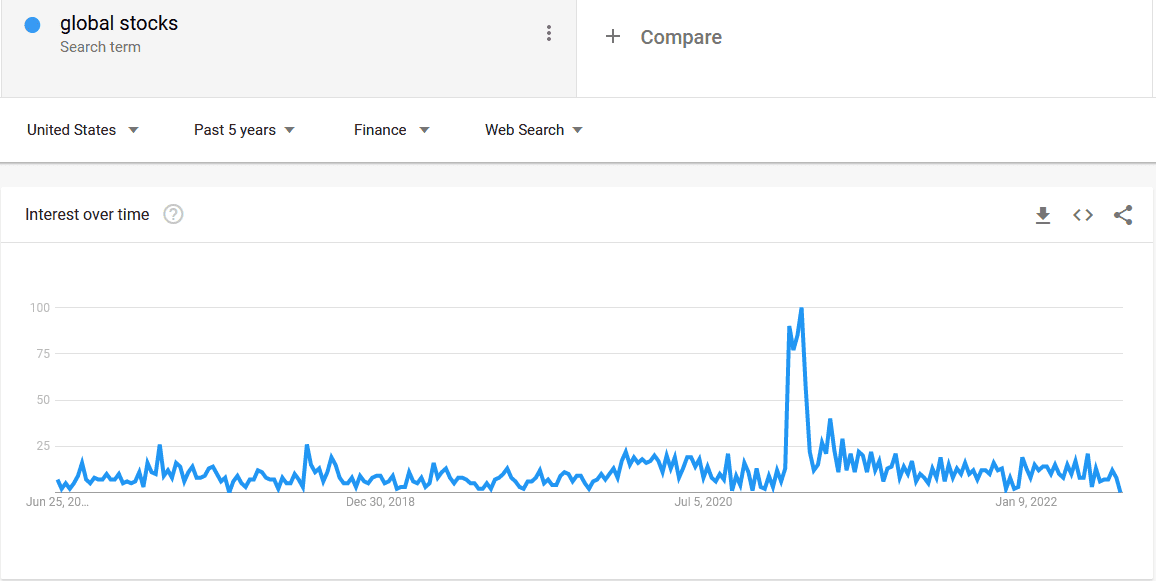
*Data via Google Trends as of 6/24/22
While many U.S. investors place ACWI in portfolios to gain international exposure, they might be surprised to note that there is a significant overlap with domestic stocks. Notice the weighted overlap in holdings with the S&P 500 via the SPY ETF and ACWI, currently with a 57% weighted overlap. U.S. investors who add ACWI to a domestic portfolio may not be getting the international diversification that they think they are. At the same time, they may be adding additional domestic exposure beyond what is required to meet their goals. It is important to remember that this is a “global” fund, meaning it has U.S. exposure. “International” funds generally do not have U.S. exposure (assuming the investor is in the U.S.).
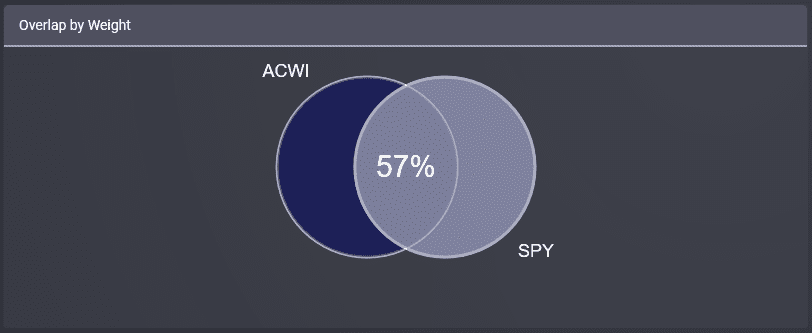
*Data via ETFRC.com as of 6/24/22
In addition to the significant weighted overlap in the holdings of ACWI and SPY, note that the top 10 holdings of both funds are nearly identical, with only one exception (Taiwan Semiconductor in ACWI and Berkshire Hathaway in SPY). Despite the nearly identical names in the top ten holdings of each fund, note that ACWI has a much lower weight at 15.25% vs. 26.68% for SPY, giving ACWI the edge as the less top-heavy fund.

*Data via fundvisualizer.com as of 5/31/22
Regarding sector weights, the funds track closely with two exceptions: heavier weighting in Basic Materials for ACWI at 4.93% vs. 2.47% for SPY, and underweight in Technology for ACWI at 19.83% vs. 24.42% for SPY.
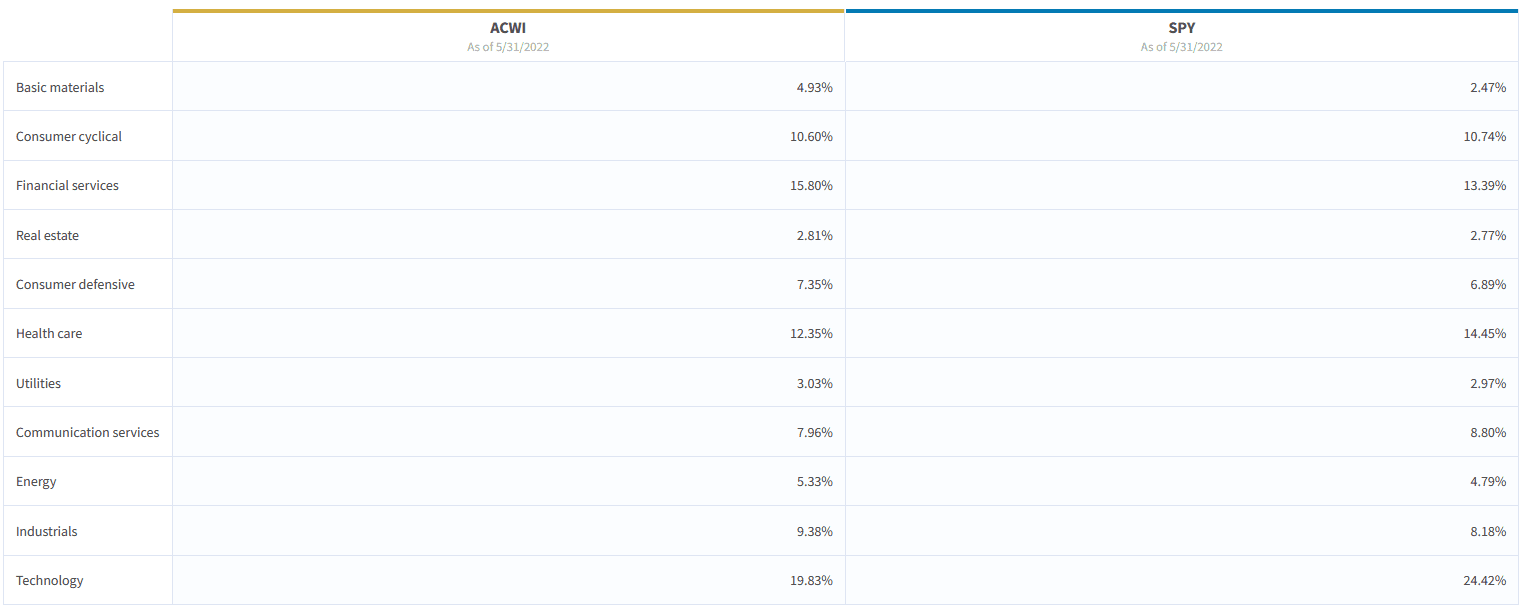
*Data via fundvisualizer.com as of 5/31/22
In addition to the lack of significant overweights at the sector level, ACWI also maintains a heavier skew toward large cap growth relative to Large Cap value, much like SPY. The obvious differences show up in the international exposure, which makes up the remainder of the fund, but it should be noted that ACWI is also skewed much more heavily to Large Caps with very little mid and small cap exposure, despite having holdings in each.

*Data via portfoliovisualizer.com as of 5/31/22
The international component of the fund has arguably been the largest drag on performance over the past several years. In fact, ACWI has only outperformed SPY in three of the last fourteen years: 2009, 2012, and 2017.
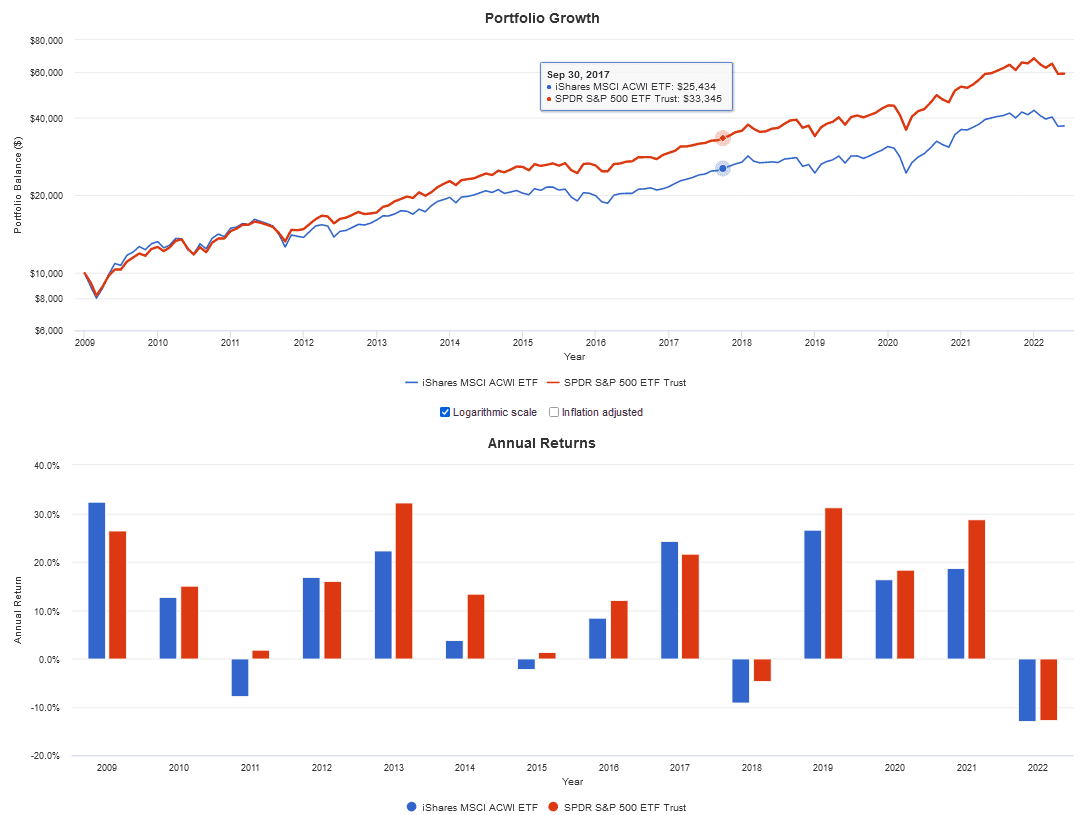
*Data via portfoliovisualizer.com as of 5/31/22
An additional hurdle for global stocks to overcome in the minds of investors is that declines have historically tended to meet or exceed that of domestic stocks, most notably in 2009 and 2012 (ironically two of the three years of global stock outperformance) and 2016.
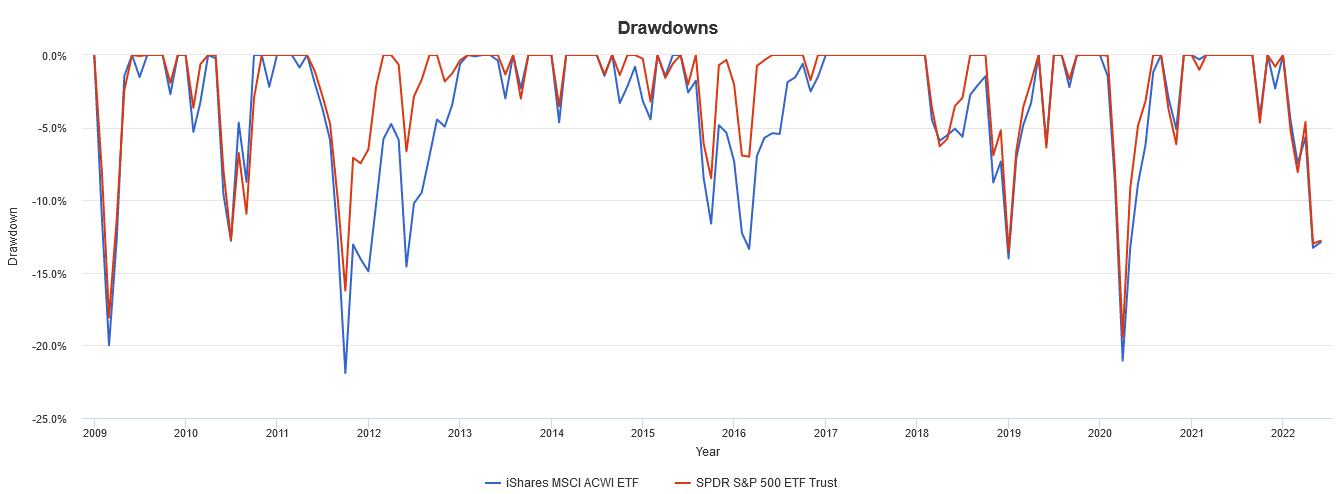
*Data via portfoliovisualizer.com as of 5/31/22
Deeper historical declines aren’t the only metric that has hurt global stocks in the last several years, as risk-adjusted returns since 2009 via Sharpe ratio have been lower for ACWI at 0.67 vs. 0.94 for SPY, despite a nearly identical Beta to SPY. Additionally, the annualized alpha of -3.75% represents another hurdle in the mind of investors.

*Data via portfoliovisualizer.com as of 5/31/22
Recent price action is much the same as many other global equity indexes, breaking below support at the $85.50 zone below a declining moving average. Note that the fund had a weak breakout attempt to retake the declining 50-day moving average to the upside back in late March and into April of this year before selling off. Under the surface, the international component of the fund appears to once again be driving another round of underperformance as the ratio has broken below long-term support and the ratio’s rising 50-day moving average after an attempt to recapture those levels in May and June. Until relative performance can complete a bearish to bullish reversal and maintain an uptrend of outperformance, the bias is with the bears in this space.
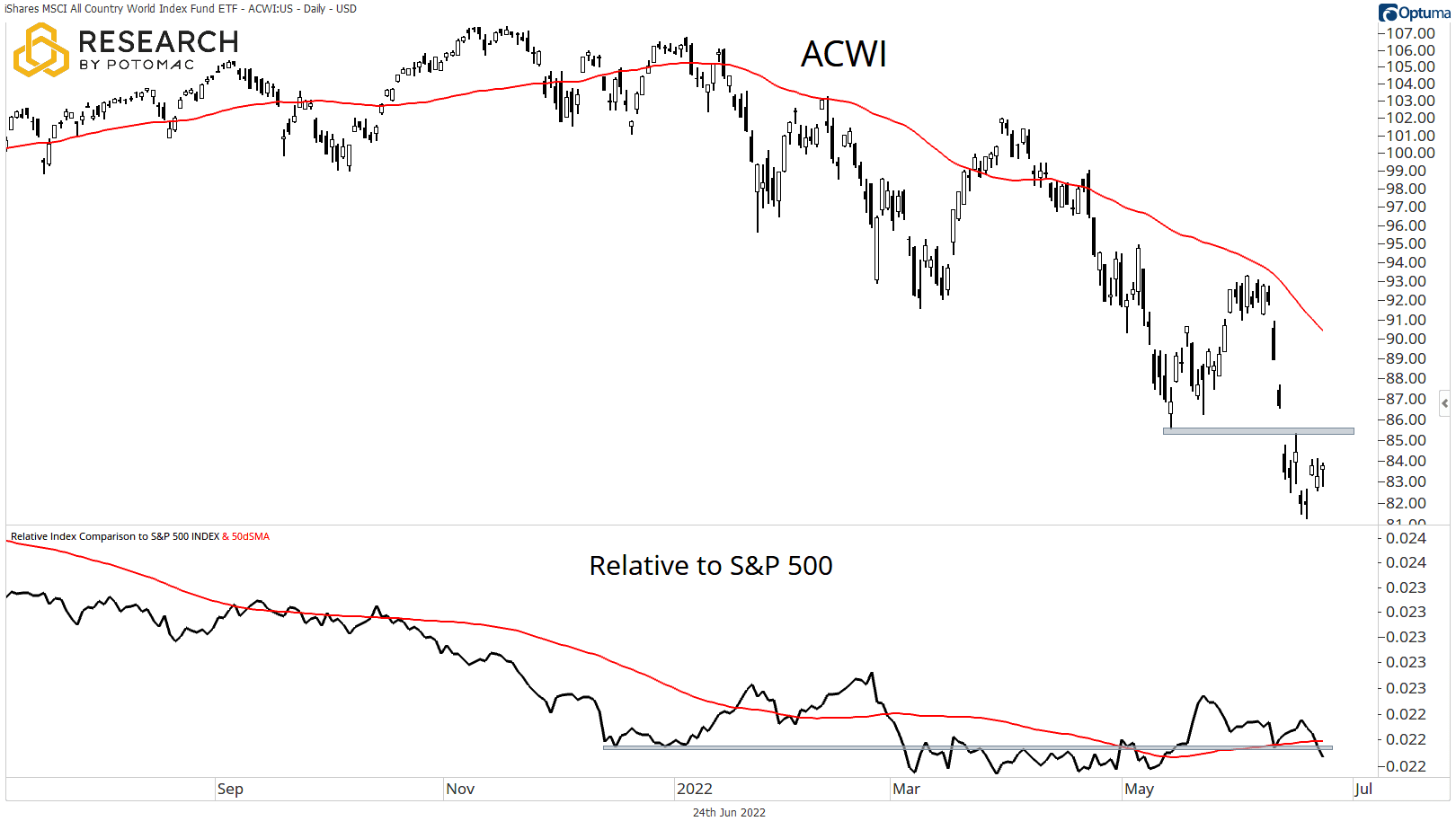
*Data via Optuma as of the close 6/23/22
Disclosure: This information is prepared for general information only and should not be considered as individual investment advice nor as a solicitation to buy or offer to sell any securities. This material does not constitute any representation as to the suitability or appropriateness of any investment advisory program or security. Please visit our FULL DISCLOSURE page.
